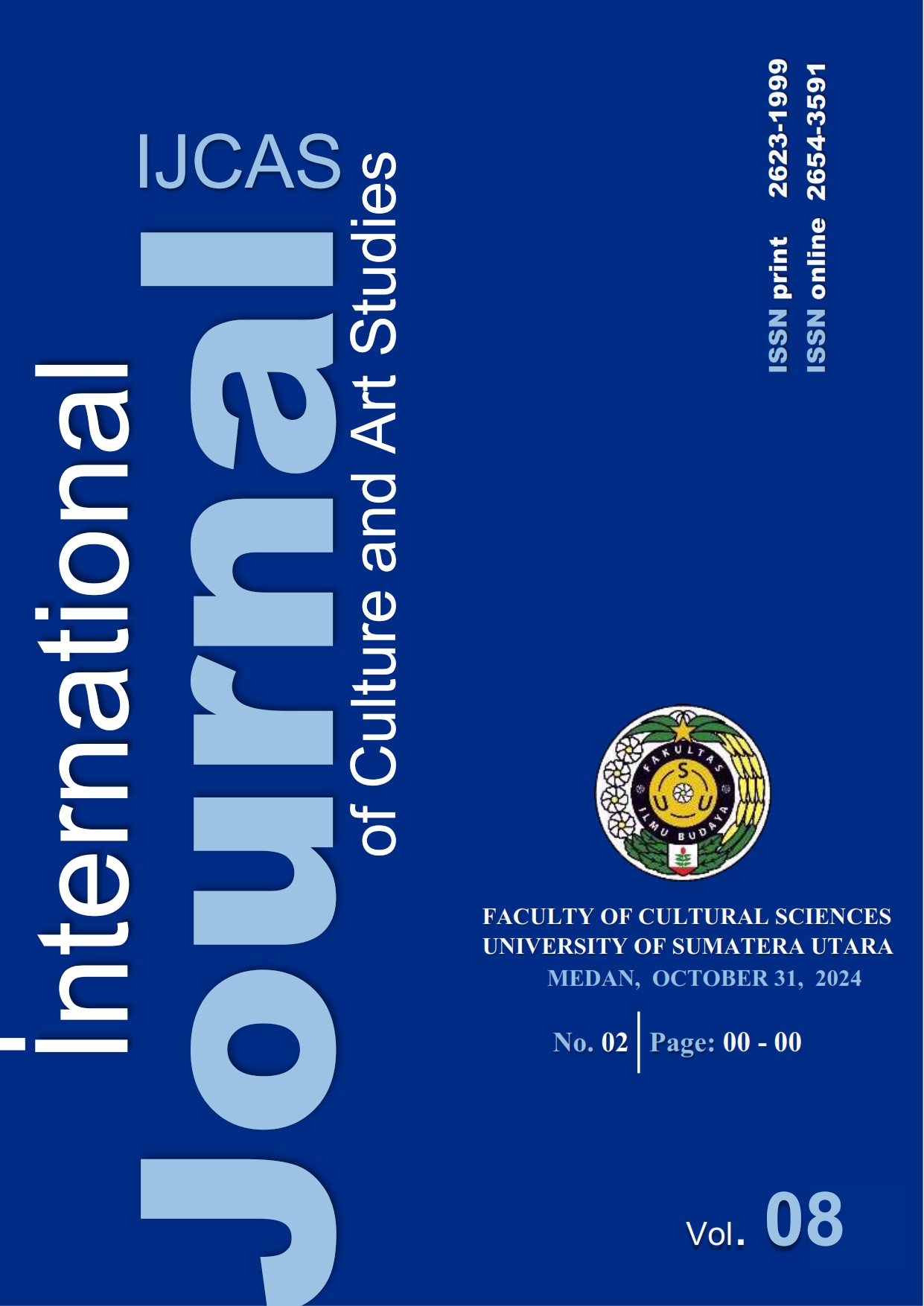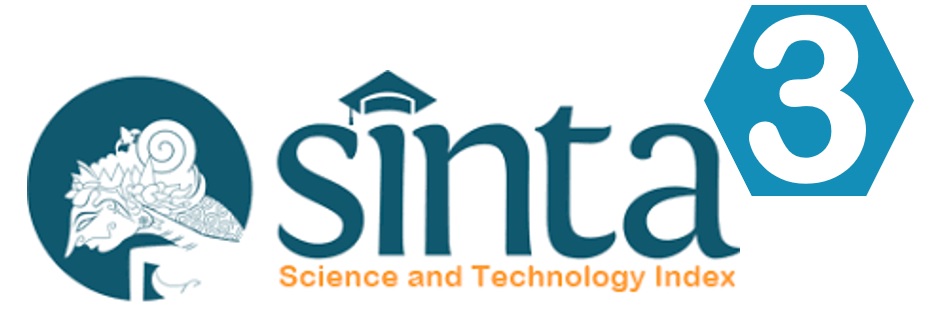Code-Mixing and Code-Switching in the TV Culinary Show MasterChef Indonesia
DOI:
https://doi.org/10.32734/ijcas.v8i2.18052Keywords:
Indonesian Language, Indonesian Culinary, Public Television Space, Code-Mixing, Code-SwitchingAbstract
This research examines the linguistic phenomena of code-mixing and code-switching in Indonesian culinary television programs, focusing on MasterChef Indonesia Season 11. The research identifies the forms of code-mixing, which include inner, outer, and hybrid mixing of languages, as well as different types of code-switching, such as tag switching, inter-sentential switching, and intra-sentential switching. The factors influencing these language shifts include globalization, the influence of foreign cultures, the need for commercial appeal, limitations in Indonesian vocabulary, and the communication habits of individuals in the culinary media. The research reveals that foreign terms, especially English, are commonly used in culinary contexts to describe techniques, ingredients, and concepts without direct Indonesian equivalents. While the use of foreign languages can enrich the Indonesian vocabulary and aid in adapting modern concepts, concerns arise regarding the erosion of the purity of Indonesian and its shifting status concerning global languages. The study underscores the importance of strategic measures for language preservation, including promoting awareness of linguistic identity and enforcing policies that ensure proper Indonesian use in mass media. The findings contribute to a deeper understanding of language dynamics in public television and its potential impact on developing and preserving Indonesian as the national language.
Downloads
References
Fadillah, A. (2023). Kontak bahasa dalam lanskap linguistik di Kota Bandar Lampung. AKSARA: Jurnal Bahasa Dan Sastra, 24(1). https://doi.org/10.23960/aksara/v24i1.pp271-288
Fathurrohman, H. R., Sumarwati, S., & Hastuti, S. (2013). Bentuk Dan Fungsi Campur Kode Dan Alih Kode Pada Rubrik “Ah...tenane†Dalam Harian Solopos. Jurnal Penelitian Bahasa, Sastra Indonesia, Dan Pengajarannya, 1(2), 207–222.
Gapur, A., Pujiono, M., & Taulia, T. (2018). Code-Mixing on Lyrics of Batak Pop Songs Martina I Love You from Trio Romansa. Journal Polingua : Scientific Journal of Linguistics, Literature and Education, 7(1), 32–36. https://doi.org/10.30630/polingua.v7i1.113
Gunawan, I. (2015). Metode Penelitian Kualitatif Teori dan Praktik. Bumi Aksara.
Kurniasih, D., & Zuhriyah, S. A. (2017). Alih kode dan campur kode di pondok pesantren mahasiswa darussalam. Indonesian Language Education and Literature, 3(1), 53. https://doi.org/10.24235/ileal.v3i1.1521
Lee, C. L., & Zhu, D. (2023). Hong Kong Cantonese TV talk shows. Pragmatics. Quarterly Publication of the International Pragmatics Association (IPrA), 33(2), 237–259. https://doi.org/10.1075/prag.21065.lee
Lestari, P., & Rosalina, S. (2022). Alih Kode dan Campur Kode dalam Interaksi Sosial antara Penjual dan Pembeli. DISASTRA, 4(1). https://doi.org/http://dx.doi.org/10.29300/disastra.v4i1.4703
Mabule, D. R. (2015). What is this? Is It Code Switching, Code Mixing or Language Alternating? Journal of Educational and Social Research. https://doi.org/10.5901/jesr.2015.v5n1p339
Mahsun. (2012). Metode penelitian bahasa (Cetakan Ke). PT Raja Grafindo Persada.
Moleong, L. J. (2014). Metode Penelitian Kualitatif (Edisi Revisi). PT. Remaja Rosdakarya.
Mulyani, R., Yusuf, M., Pujiono, M., Aswani, A., & Dahlan, Z. (2023). Code Choices in Marriage Discourse Preach: A Sociolinguistic Analysis. World Journal of English Language, 13(2), 450. https://doi.org/10.5430/wjel.v13n2p450
Pujiono, M. (2015). Interferens Linguistik Dan Budaya Dalam Kalangan Pelajar Indonesia Yang Belajar Bahasa Jepun Sebagai Bahasa Kedua [Universiti Sains Malaysia]. http://eprints.usm.my/30512/
Puspitasari, R. D., & Dewanti, A. (2020). Code Switching in Sarah Sechan Talk Show on NET TV. Utopia y Praxis Latinoamericana, 25. https://doi.org/https://doi.org/10.5281/zenodo.3784888
Riaz, M. (2019). Language variation: Code-mixing and code-switching in Pakistani commercials. Dil ve Dilbilimi Çalışmaları Dergisi, 15(2), 411–419. https://doi.org/10.17263/jlls.586085
VANYUSHINA, N., & HAZAYMEH, O. (2021). Code-mixing to English language as a means of communication in Jordanian Arabic. Dialectologia, 2021.27. https://doi.org/10.1344/Dialectologia2021.27.10
Widyaningtyas, D. (2018). Fenomena Penggunaan Campur Kode dan Alih Kode Mahasiswa Prodi Bahasa dan Sastra Jepang dalam Akun Grup Himaje Jejaring Sosial Facebook. Wanastra: Jurnal Bahasa Dan Sastra, 10(1), 65–70. https://doi.org/10.31294/w.v10i1.2702
Downloads
Published
How to Cite
Issue
Section
License
Copyright (c) 2024 Muhammad Yusuf, Abdul Gapur

This work is licensed under a Creative Commons Attribution-ShareAlike 4.0 International License.













